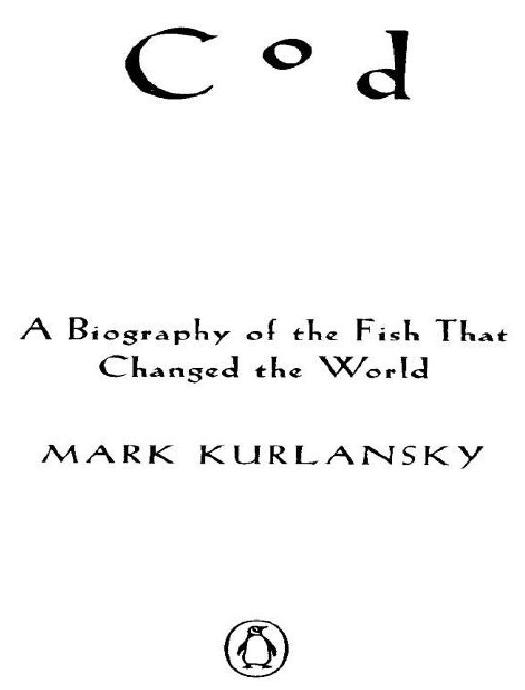Cod by Mark Kurlansky

Author:Mark Kurlansky
Language: eng
Format: mobi, epub, pdf
ISBN: 9781440672873
Publisher: Penguin USA, Inc.
Published: 2011-08-12T05:40:13+00:00
Through the centuries, fishing vessels and gear changed little in Iceland. Above: A detail from a late-sixteenth-century illuminated manuscript, one of the Law Books, codifying regulations. This page was on fishing. (Árni Magnússon Institute, Reykjavik, Iceland) Below: A photograph, circa 1910, taken in Isafjördhur, a fishing community on the west coast of Iceland. (Akranes Museum, Akranes, Iceland)
While fish continued to be Iceland’s principal export, until the second half of the nineteenth century, the quantity remained small. At the end of the eighteenth century, when New England and Newfoundland each had annual cod exports of 22,000 tons, Iceland was exporting less than 1,000 tons. Most Icelanders were farmers, but many of them, especially in the south and west, earned more fishing from February to April than farming the rest of the year. Not a tree grows on the island, except a few ornamental ones planted by landscapers in Reykjavik. So there is no fruit, nor is there grain. The English traded grain for fish in the fifteenth century. But stockfish was always the bread substitute. Pieces are torn off and spread with butter. From 1500 to 1800, every schoolchild in Iceland was given half a stockfish a day. Icelanders never acquired a taste for either fresh or salted cod. But in 1855, when the Danish agreed to lift their ban on foreign trade, Icelanders began learning how to salt cod, earning a place in quality Spanish and Portuguese markets.
Grindavik is a seaward strip of land, chosen as a fishing station in 910 because it was close to the cod grounds. In 1934, when Tómas Thorvaldsson first went to sea, fishermen still spent twenty minutes every morning dragging their boats over the lava into the sea. In the evening, it took an hour to get them back up. The people of Grindavik would go to the black lava beach in the evening and wait for their men to get home. There are still women who remember watching one of the boats capsize and get swallowed up in a huge swell.
The Icelanders of Tómas’s generation grew up with little money for imports. They ate what the island produced, which was mainly every conceivable part of a codfish and a lamb. They roasted cod skin and kept cod bones until they had decomposed enough to be soft and edible. They also ate roasted sheeps’ heads, particularly praising the eyeballs. Another specialty was hákarl, the flesh of a huge Greenland shark, hunted for the commercial value of its liver oil. The flesh, which contains cyanic acid, a lethal poison, was rendered edible by leaving it buried in the ground for weeks until it rotted.
Download
This site does not store any files on its server. We only index and link to content provided by other sites. Please contact the content providers to delete copyright contents if any and email us, we'll remove relevant links or contents immediately.
Sapiens: A Brief History of Humankind by Yuval Noah Harari(14322)
The Tidewater Tales by John Barth(12627)
Mastermind: How to Think Like Sherlock Holmes by Maria Konnikova(7281)
Do No Harm Stories of Life, Death and Brain Surgery by Henry Marsh(6908)
The Thirst by Nesbo Jo(6882)
Why We Sleep: Unlocking the Power of Sleep and Dreams by Matthew Walker(6659)
Life 3.0: Being Human in the Age of Artificial Intelligence by Tegmark Max(5518)
Sapiens by Yuval Noah Harari(5325)
The Longevity Diet by Valter Longo(5044)
The Body: A Guide for Occupants by Bill Bryson(5032)
The Rules Do Not Apply by Ariel Levy(4912)
The Immortal Life of Henrietta Lacks by Rebecca Skloot(4552)
Animal Frequency by Melissa Alvarez(4430)
Why We Sleep by Matthew Walker(4395)
The Hacking of the American Mind by Robert H. Lustig(4342)
Yoga Anatomy by Kaminoff Leslie(4334)
All Creatures Great and Small by James Herriot(4273)
Double Down (Diary of a Wimpy Kid Book 11) by Jeff Kinney(4244)
Embedded Programming with Modern C++ Cookbook by Igor Viarheichyk(4143)
